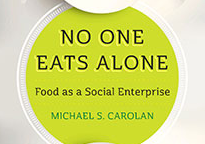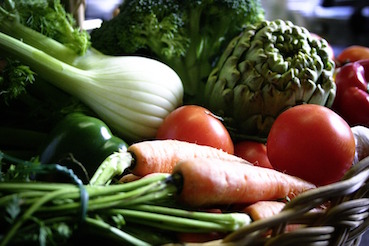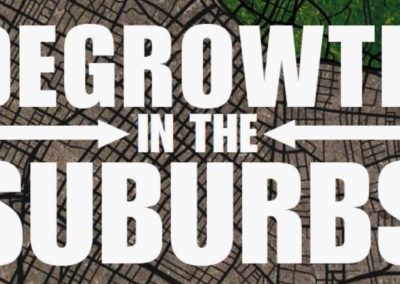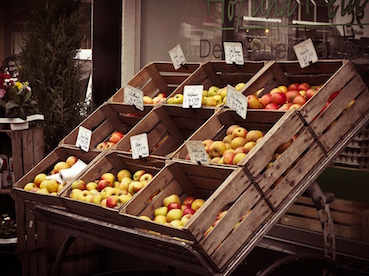Research about Open Food Network
No one eats alone: Food as a Social Enterprise
Getting big versus getting together
Given that Michael Carolan’s latest book, No one eats alone: Food as a Social Enterprise argues ‘that building community is the key to healthy, equitable, and sustainable food’ we shouldn’t be surprised that Open Food Network came across his radar!
Have a read of Carolan’s assessment of the Open Food Network and why it’s important to think about the motivation of the platform you use, not just the technology. The quote below is from the ‘Getting big versus getting together chapter’:
“The goal of alternative distribution models like Food Assembly, FarmDrop, and the Open Food Network is about increasing transparency, giving people the tools to know where their food comes from while creating new distribution channels – so new, in fact, that they bypass conventional supply chains entirely,” said Jen, a small-scale farmer and baker with ties to the Open Food Network Australia – another internet-based platform, in some respects like FarmDrop, to connect producers and consumers. “It’s important to realize just how revolutionary these new platforms have the potential of being,” she added. “The argument that you need to get bigger is an outmoded one. Getting bigger means creating market distortions… It’s about putting the little guys out of business, failing to realize that those small businesses help to create vibrant communities and neighbourhoods, and help households stay afloat financially. Why bother getting big? Getting together is far more optimal for everyone involved.”
Even among these alternative platforms there are degrees of alternative-ness, if you will forgive the clunky terminology. Jen mentioned the Open Food Network in the same breath as FarmDrop. On the surface, these tools look remarkably similar. Both are web-based platforms designed to cut out intermediaries and reduce the distance, social and spatial, between eaters and producers. You have to know what you are looking for in order to spot the differences between them: subtle disparities that could easily be overlooked, but which have the potential to produce quite different outcomes.
Founded by Serenity Hill and Kirsten Larsen out of Melbourne, Australia, the Open Food Network is built on free and open-source software. FarmDrop, conversely, is a proprietary platform developed with the help of crowdfunding as well as a number of significant individual investments. FarmDrop is therefore not cutting out the middleman entirely, but standing in for traditional intermediaries. Its frequently advertised revenue split is 80/10/10: 80 percent to those who raise and make food; 10 percent to “keepers” – namely, those who manage the online platform and encourage membership; and 10 percent to FarmDrop. Some of that 20 percent not going to producers ends up in the pockets of investors, though I was not able to find out precisely how much. FarmDrop is also a standardized alternative, which is to say that its look, it functionality, and the platform and code it is built on are fixed, which is a common feature of any proprietary technology – think Microsoft Office.
The Open Food Network, by contrast, and to quote Jen, “grows by sharing ideas, creating a space for all stakeholders, and redesigning code according to whatever comes out of those deliberative processes. It’s about the creation of community-based ventures, for communities and according to their needs and resources.” Because the Open Food Network is based on open-source code, it is decidedly not standardized, which underscores Jen’s point about how the platform allows communities to “redesign” it “for communities according to their needs and resources.” Thus, unlike FarmDrop, which is a private proprietary company controlled by its founders, Open Food network is freeing.
Talking to growers, I was also unable to come up with a clear revenue breakdown, like FarmDrop’s advertised 80/10/10 split. “That’s not dictated by the platform,” Jen told me when I asked her about this. “That’s left up to each community to decide. This isn’t a for-profit venture, so it’s not like the original code developers are looking to get their cut.” This brings me to the issue of farmer autonomy. FarmDrop is undeniably equitable, in the sense that it funnels far more of every dollar spent on food back to producers than conventional supply chains do. Yet we cannot ignore that farmers remain beholden to key market actors in this arrangement, namely, FarmDrop itself. FarmDrop still dictates prices, whereas in the Open Food Network the question of who sets prices is part of the conversation.
There was also some concern among producers linked to FarmDrop that the aforementioned 80/10/10 split could change. What if its investors eventually decide that returns are insufficient? FarmDrop holds sufficient leverage to demand a larger cut of revenue. As long as producers are promised a larger share than what is offered through conventional supply chains, they will have to accept whatever FarmDrop tells them is fair. I’m not saying this will happen. The people I talked to who were associated with this platform seemed genuine in their concerns about returning as large a share as possible back to producers. My point is simply that the platform itself does not really empower producers – enriching and empowering are not necessarily the same things. As one grower quipped, “Fortunately, they” – FarmDrop – “are proving to be far kinder and gentler than actors in conventional markets. But that could change.”




